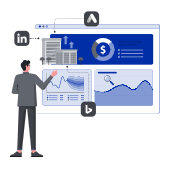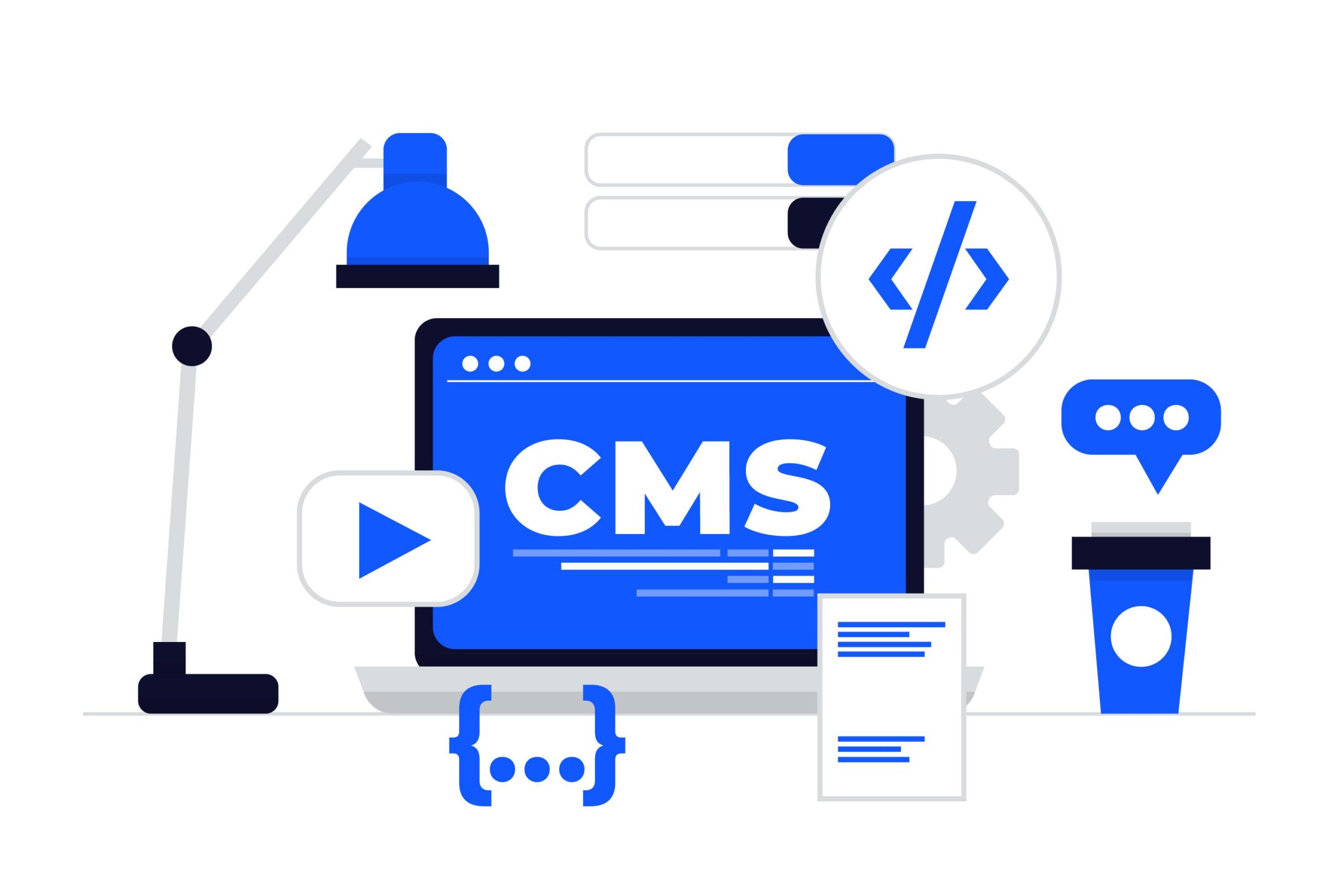Learn how to choose the right CMS for your business website. This guide covers key factors like ease of use, SEO, security, and scalability to help you make the best decision.
Choosing the right Content Management System (CMS) is one of the most important decisions you’ll make for your business website. A CMS is the backbone of your site, affecting everything from design and functionality to SEO and security. With so many options available, finding the perfect fit can feel overwhelming.
In this blog, we’ll guide you through the process of choosing the right CMS for your business website. From evaluating your needs to comparing popular platforms, we’ll cover everything you need to make an informed decision. Let’s dive in!
Why Choosing the Right CMS Matters
Your CMS impacts nearly every aspect of your website. Here’s why it’s crucial to choose wisely:
- Ease of Use: A user-friendly CMS makes it easy to update and manage your site.
- SEO Performance: Some CMS platforms are better optimized for search engines.
- Scalability: Your CMS should grow with your business.
- Security: A secure CMS protects your website from cyber threats.
- Cost: Different CMS platforms come with varying costs, including hosting, plugins, and maintenance.
In short, the right CMS can make or break your website’s success.
Step 1: Define Your Business Needs
Before choosing a CMS, you need to understand your business requirements. Ask yourself:
1. What Type of Website Are You Building?
- Blog: Platforms like WordPress are ideal for content-heavy sites.
- E-commerce: Shopify or WooCommerce might be better for online stores.
- Portfolio: Squarespace or Wix are great for showcasing work.
2. What Features Do You Need?
- SEO Tools: Look for built-in SEO features or plugins.
- E-commerce Functionality: Ensure the CMS supports payment gateways and product listings.
- Customization: Check if the CMS allows for custom themes and plugins.
3. What’s Your Budget?
- Consider upfront costs, hosting fees, and ongoing maintenance.
Pro Tip: Create a list of must-have features and prioritize them.
Step 2: Compare Popular CMS Platforms
Here’s a quick comparison of some of the most popular CMS platforms:
1. WordPress
- Best For: Blogs, business websites, and e-commerce (with WooCommerce).
- Pros: Highly customizable, extensive plugin library, strong SEO capabilities.
- Cons: Requires regular updates and maintenance.
2. Shopify
- Best For: E-commerce websites.
- Pros: Easy to use, built-in payment processing, excellent customer support.
- Cons: Limited customization, monthly fees can add up.
3. Wix
- Best For: Small businesses and personal websites.
- Pros: Drag-and-drop builder, affordable pricing, beginner-friendly.
- Cons: Limited scalability, less flexibility for advanced users.
4. Squarespace
- Best For: Creative professionals and portfolios.
- Pros: Beautiful templates, all-in-one platform, easy to use.
- Cons: Limited third-party integrations, higher pricing.
5. Joomla
- Best For: Complex websites with advanced functionality.
- Pros: Highly flexible, strong community support.
- Cons: Steeper learning curve, requires technical expertise.
Pro Tip: Use comparison tools like Capterra or G2 to evaluate CMS platforms based on user reviews and features.
Step 3: Evaluate Ease of Use
A user-friendly CMS saves time and reduces frustration. Consider:
1. Drag-and-Drop Builders
Platforms like Wix and Squarespace offer intuitive drag-and-drop interfaces, making them ideal for beginners.
2. Customization Options
WordPress and Joomla offer extensive customization but may require technical skills.
3. Learning Curve
If you’re not tech-savvy, choose a CMS with a shallow learning curve, like Wix or Shopify.
Pro Tip: Take advantage of free trials or demos to test the platform’s usability.
Step 4: Check SEO Capabilities
SEO is critical for driving organic traffic to your website. Look for:
1. Built-In SEO Tools
Platforms like WordPress and Squarespace offer built-in SEO features, such as meta tags and sitemaps.
2. Plugin Support
WordPress has a wide range of SEO plugins, like Yoast SEO and Rank Math.
3. Mobile Optimization
Ensure the CMS supports responsive design and fast loading speeds.
Pro Tip: Use tools like Google PageSpeed Insights to test the SEO performance of websites built on the CMS.
Step 5: Assess Security Features
A secure CMS protects your website from cyber threats. Consider:
1. Regular Updates
Platforms like WordPress and Joomla release regular updates to patch vulnerabilities.
2. SSL Support
Ensure the CMS supports SSL certificates for secure data transmission.
3. Backup Options
Look for CMS platforms that offer automatic backups or integrate with backup plugins.
Pro Tip: Use security plugins like Wordfence (for WordPress) to enhance your website’s security.
Step 6: Consider Scalability
Your CMS should grow with your business. Ask:
1. Can It Handle Increased Traffic?
Platforms like WordPress and Shopify are highly scalable.
2. Does It Support Additional Features?
Ensure the CMS allows for easy integration of new plugins or extensions.
3. Is It Flexible Enough?
Choose a CMS that can adapt to your changing needs.
Pro Tip: Look for case studies or testimonials from businesses that have scaled using the CMS.
Step 7: Review Costs
The cost of a CMS includes more than just the platform itself. Consider:
1. Upfront Costs
Some platforms, like WordPress, are free, but you’ll need to pay for hosting and themes.
2. Ongoing Expenses
Platforms like Shopify charge monthly fees, while others may require paid plugins or extensions.
3. Hidden Costs
Factor in costs for maintenance, security, and potential developer fees.
Pro Tip: Create a budget spreadsheet to compare the total cost of ownership for each CMS.
Step 8: Test Before You Commit
Before making a final decision, test the CMS:
1. Free Trials
Many platforms, like Shopify and Wix, offer free trials.
2. Demo Sites
Use demo sites to explore the CMS’s features and interface.
3. User Reviews
Read reviews on sites like Trustpilot or G2 to understand the pros and cons.
Pro Tip: Involve your team in the testing process to get multiple perspectives.
Conclusion
Choosing the right CMS for your business website is a critical decision that impacts your site’s functionality, SEO, and scalability. By defining your needs, comparing platforms, and testing options, you can find a CMS that aligns with your goals and budget.
Remember, the best CMS is one that grows with your business and makes your life easier. Take your time, do your research, and don’t hesitate to seek expert advice if needed. You can contact us for a Content Management plan; we will handle everything for you.









